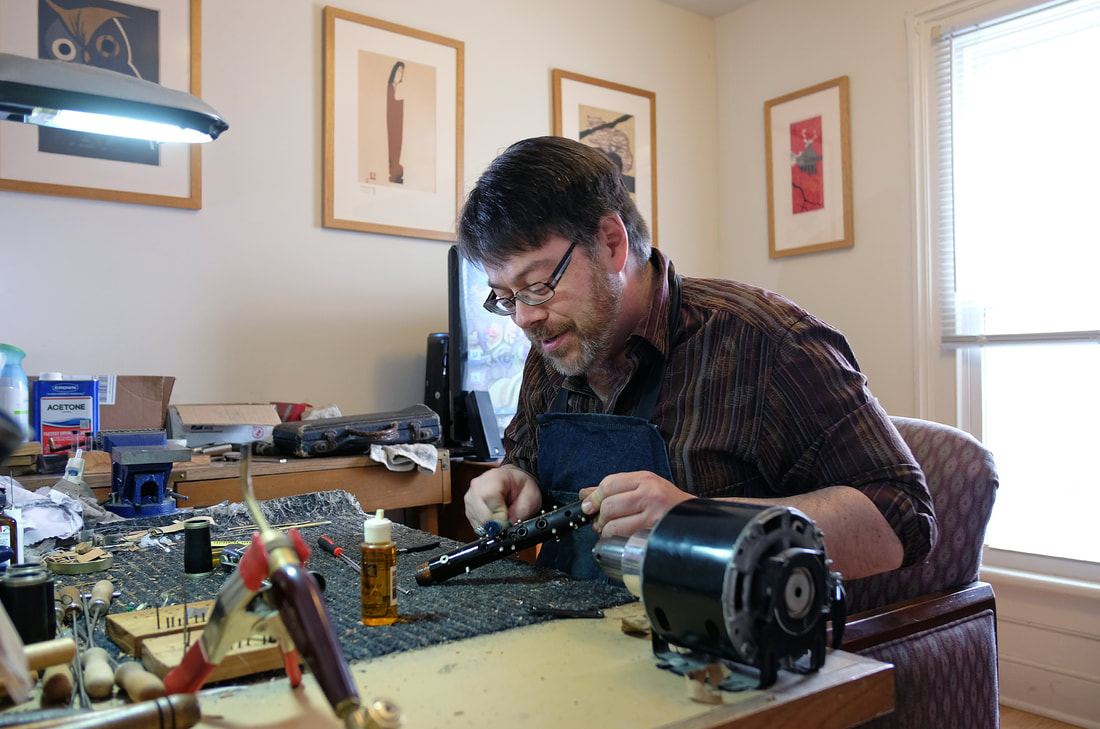 To continue: Yes, there are terrible metal and hard rubber clarinets out there: There are also hideous wood instruments, as anyone who has played a post WWII East German/Soviet made horn with pot-metal keys can attest! However, the mitigating factors always seems to be quality of construction and attention to set-up rather than the material - I offer Tom Ridenour's pro line of Hard Rubber instruments, and vintage metal instruments by Noblet, H. Bettoney or Penzel Mueller, as evidence. Tom's instruments have received a lot of kudos for pro quality detailing (like tone-hole undercutting) and, having discarded increasingly expensive and hard to find grenadilla, they are available for less than half the cost of the fabled R-13. I suspect the factors that initiated the sub-par reputation of a lot of better metal/hard rubber clarinets were: poor mouthpieces and shoddy pad work. If the mouthpieces that have come stock with a number of my acquisitions are anything to go by, Martin Frost at his best would be hard-pressed to draw good music from their narrow tips and uneven facing! Original pad-work shows signs of being equally hurried, in some cases, with cheap pads poorly seated and opening heights at the mercy of whatever cork was on sale that week. Now, take that same horn, overhaul it conscientiously with leather pads and attention to setup and play it with a decent mouthpiece and I suspect you will be pleasantly surprised! So, why grenadilla wood in the first place? I wonder about that myself, and encourage speculation from readers. Before grenadilla, boxwood and various fruitwoods were universally used for woodwind instruments but, at some point in the late 19th century, everyone switched to grenadilla. I know that it is hard, mills well, and is attractive. However, it is also slow-growing, in limited supply, and requires long seasoning for good results: according to an interview with the late Hans Moennig, when he started as a repairman in the 20's, Buffet was aging its wood blanks for over 20 years before milling. At his retirement in the early 80's, it was down to about 7 years - I don't know what it is now... Buffet's experiment with the 'Greenline' model (or 'Greenstick', as I've heard them referred to, based on how the tenons fracture) of grenadilla dust with a binder seems a promising step in a new direction but, like First Act instruments from China, further refinement would seem to be required :) I look forward to new materials and technologies to bring the clarinet into the 21st century; improving intonation and performance, lowering cost (anyone tried to buy an R13 lately?), and reducing our dependence on, and harvesting of, an endangered slow-growing hardwood. Would love to hear other ideas and perspectives on the subject: anyone feel like guest writing a column?
0 Comments
Your comment will be posted after it is approved.
Leave a Reply. |
Archives
February 2024
AuthorThe Licorice Shtick Blog is the creation of the Vintage Clarinet Doctor, a Winston Salem, NC based woodwind instrument repair shop specializing in vintage and antique clarinets, saxophones, and the occasional flute. Categories |

 RSS Feed
RSS Feed